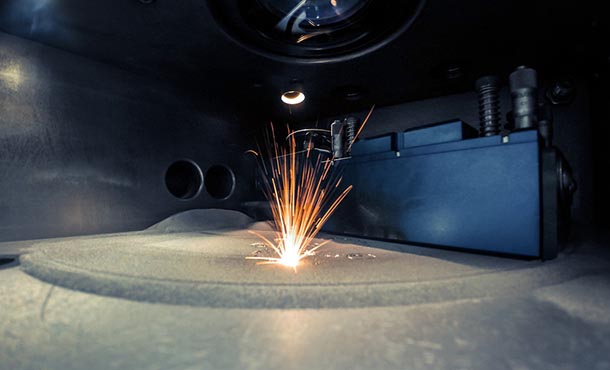
Principal investigator Christopher Kube, assistant professor of engineering science and mechanics, will use a $1 million grant from the U.S. Department of Energy to develop ultrasonic sensors and integrate them into a powder bed fusion 3D printer. IMAGE: ISTOCK/@MARINA_SKOROPADSKAYA
$1 million grant awarded to additive manufacturing researchers
Ultrasonic sensors to be developed and tested for ultra-precise printing
11/12/2020
By Mariah Chuprinski
UNIVERSITY PARK, Pa. — The additive manufacturing industry might soon have new technology in its toolkit. Christopher Kube, assistant professor of engineering science and mechanics in the Penn State College of Engineering, is investigating the use of ultrasonic sensors in additive manufacturing to enable precise control of the microscopic structure of metal parts.
Along with Abdalla Nassar from Penn State’s Center for Innovative Materials Processing, Haifeng Zhang from the University of North Texas, Anthony Rollett from Carnegie Mellon University and Clint Armstrong from Westinghouse Electric Company, principal investigator Kube will develop ultrasonic sensors and integrate them into a powder bed fusion 3D printer using a $1 million grant from the U.S. Department of Energy.
“Additively manufactured parts have significant potential to disrupt the nuclear energy industry by offering new and replacement metal parts that can only be made using 3D printing,” Kube said. “However, the current printing processes often do not produce parts of adequate quality.”
To improve the properties of printed metal parts, Kube will lead the development of ultrasonic sensors, known as SMART sensors (Sensing Microstructure using Acoustics in Real Time). The sensors will use ultrasonic waves to determine information about the microstructure of a metal part, similar to how an ultrasound is used in the medical field to see inside of a body.
Ultrasonic sensors, Kube explained, can also be likened to seismology, where acoustic waves are detected deep in the earth.
“A seismic signal generally contains a significant amount of noise, which carries information about the internal structure of the Earth,” he said. “If you can interpret the signals, you can quantify the internal structure. The same is true in ultrasonic sensors, where noisy signals can be likened to structural fingerprints.”
Once the researchers develop the sensors, they will be installed under a printing platform and used in situ, or during the printing process itself, to take simultaneous measurements in real time on multiple parts. In situ measurement is unique to this study, according to Kube, as current monitoring methods have limited sensitivity to a part’s microstructure.
“Characterizing the part quality during the print retains the agility afforded by the 3D printing process,” Kube said. “The value of 3D printing is greatly diminished when a part has to undergo time-consuming and costly quality control inspections after the print.”
Collaborators at Penn State’s Center for Innovative Materials Processing will manufacture metal parts using Grade 91 steel, an emerging metal alloy commonly used in the nuclear energy industry, to test and validate the sensors.
“Westinghouse, a prominent company in the nuclear energy industry, will guide our part selection and decisions on what to print and test to ensure the sensors can eventually be used in realistic industry applications,” Kube said.



